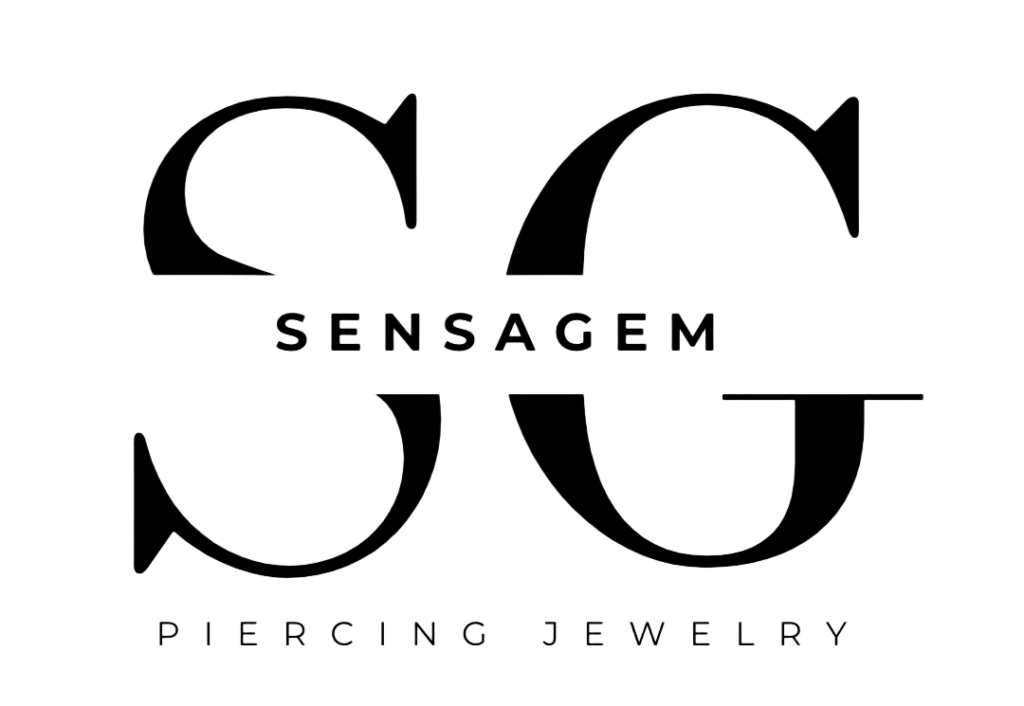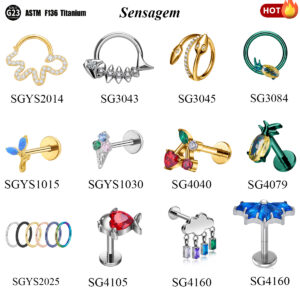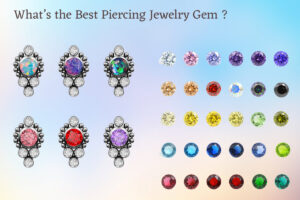Introduction:
In the world of body jewelry, certification isn’t just a technicality—it’s a necessity. Whether you’re a piercing studio sourcing bulk jewelry or a distributor serving international markets, using certified materials like ASTM F136 titanium and 316L stainless steel ensures safety, trust, and long-term wearability. This guide explains what piercing jewelry certification means, what standards to look for, and how to verify compliance before placing an order.
👉 Related: F136 Titanium vs. 316L Stainless Steel – Best for Piercing Jewelry
1. What is Piercing Jewelry Certification?
Certification verifies that body jewelry materials meet specific biocompatibility and safety standards. The two main organizations governing these standards are:
ASTM International: Defines specifications for surgical-grade materials
ISO (International Organization for Standardization): Oversees global manufacturing quality and safety
Jewelry that meets these standards is proven to be:
Hypoallergenic
Corrosion-resistant
Safe for long-term wear in the human body
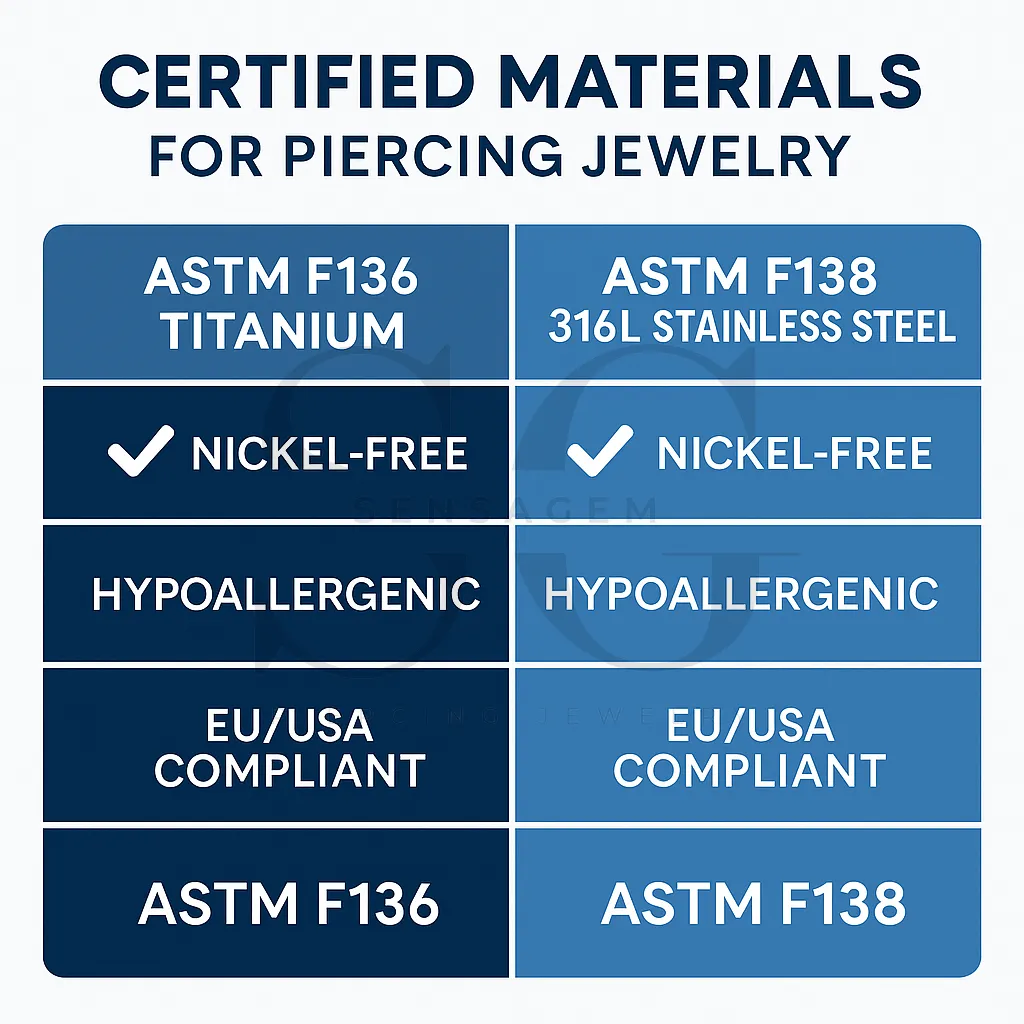
2. Key Standards for Piercing Jewelry Materials
✅ ASTM F136 (Titanium)
Titanium alloy used in surgical implants
Fully biocompatible, ideal for fresh piercings
Extremely lightweight and nickel-free
✅ ASTM F138 (316L Stainless Steel)
Low-carbon surgical stainless steel
Corrosion-resistant, durable, and cost-effective
Suitable for healed piercings, but may contain trace nickel
✅ ISO Certifications
Confirm standardized production, composition, and safety
Indicate consistent quality in international trade
3. Why It Matters: Titanium vs. Steel for Hypoallergenic Jewelry
| Feature | ASTM F136 Titanium | 316L Stainless Steel |
|---|---|---|
| Nickel-Free | ✅ Yes | ❌ Contains trace nickel |
| Best For | New & sensitive piercings | Healed piercings |
| Certifications | ASTM F136, ISO 5832-3 | ASTM F138, ISO 10993 |
| Weight | Lighter | Heavier |
| Color Options | Anodizing-friendly | Plating available |
If your clients include sensitive-skin customers or new piercees, ASTM F136 is the safest option.
4. How to Verify Certification Before You Buy
Before placing any wholesale order, ask for the Mill Test Certificate (MTC) or material report.
A legitimate MTC will include:
Material grade (e.g., ASTM F136 or F138)
Chemical composition (e.g., nickel content)
Compliance standards (ASTM/ISO)
Supplier contact details and batch number
👉 Helpful resource: Mill Certificate Criteria by APP
Sensagem provides Mill Certificates for all titanium products on request.
5. Initial Jewelry: What Certifications Should Be Non-Negotiable?
According to industry guidelines (e.g., APP), jewelry for initial piercings must meet implant-grade standards:
✅ ASTM F136 Titanium
✅ ASTM F138 Stainless Steel
❌ Avoid plated, mystery metals, or nickel-rich alloys
6. Market Trends: Why Certification Boosts Sales
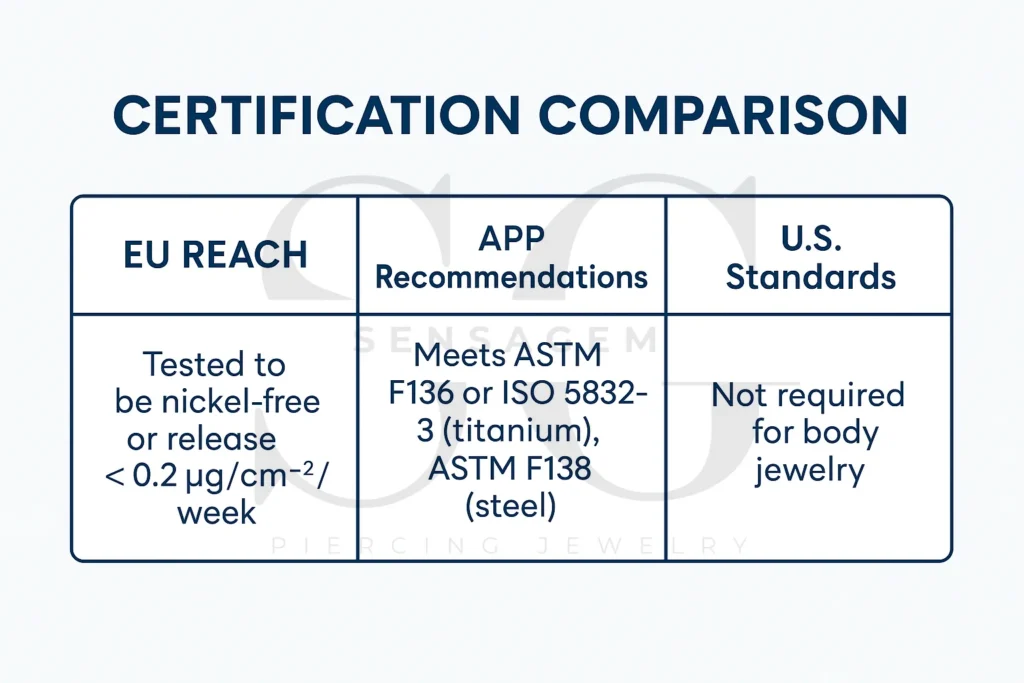
As health awareness rises, B2B buyers now prioritize certified materials:
Over 20% of piercing complications are linked to uncertified metals
Certified jewelry commands higher resale margins
EU and U.S. regulations are increasingly strict
Sensagem has seen a 25% increase in certified titanium orders in 2024–2025, especially from Germany, Sweden, and the U.S.
7. Frequently Asked Questions (FAQs)
1. What are ASTM F136 and ASTM F138 standards?
• These standards outline the requirements for titanium (F136) and stainless steel (F138) alloys used in surgical implants, ensuring they are biocompatible and safe for use in body piercings.
2. Why are ISO certifications important for piercing jewelry?
• ISO certifications ensure that materials meet international safety standards, reducing the risk of allergic reactions or infections in piercing jewelry.
3. How can I verify if my piercing jewelry is compliant with these standards?
• Request mill certificates from your piercing jewelry supplier. These documents will confirm the compliance of the materials with ASTM and ISO standards.
4. What materials should I choose for initial piercings?
• For initial piercings, opt for materials like 316L Stainless Steel or ASTM F136 Titanium, which are hypoallergenic and safe for the healing process.
Conclusion:
Choosing certified materials like 316L Stainless Steel and ASTM F136 Titanium ensures that your body piercing jewelry is both safe and durable. With proper certifications, you can trust that the jewelry you wear will not only enhance your style but also protect your health and safety.
By understanding the importance of piercing jewelry certification and verifying the materials used, you can make informed decisions about the jewelry you purchase or sell. Whether you are a consumer, retailer, or manufacturer, following the standards set by organizations like ASTM and ISO will help you provide or wear body piercing jewelry that meets the highest safety and quality standards.
For more information, explore Jewelry for Initial Piercings and What Are the Requirements for Body Piercing Jewelry to learn about the key standards for safe, quality jewelry.
Conclusion
In wholesale body jewelry, certification is not optional—it’s a competitive advantage. ASTM and ISO standards help ensure long-term skin safety, build customer trust, and support global compliance. Make sure your supplier can provide full documentation—and choose materials that meet both medical and market demands.
👉 Ready to source ASTM F136 titanium or certified 316L steel jewelry? Contact Sensagem for your wholesale catalog or Mill Certificate sample.
